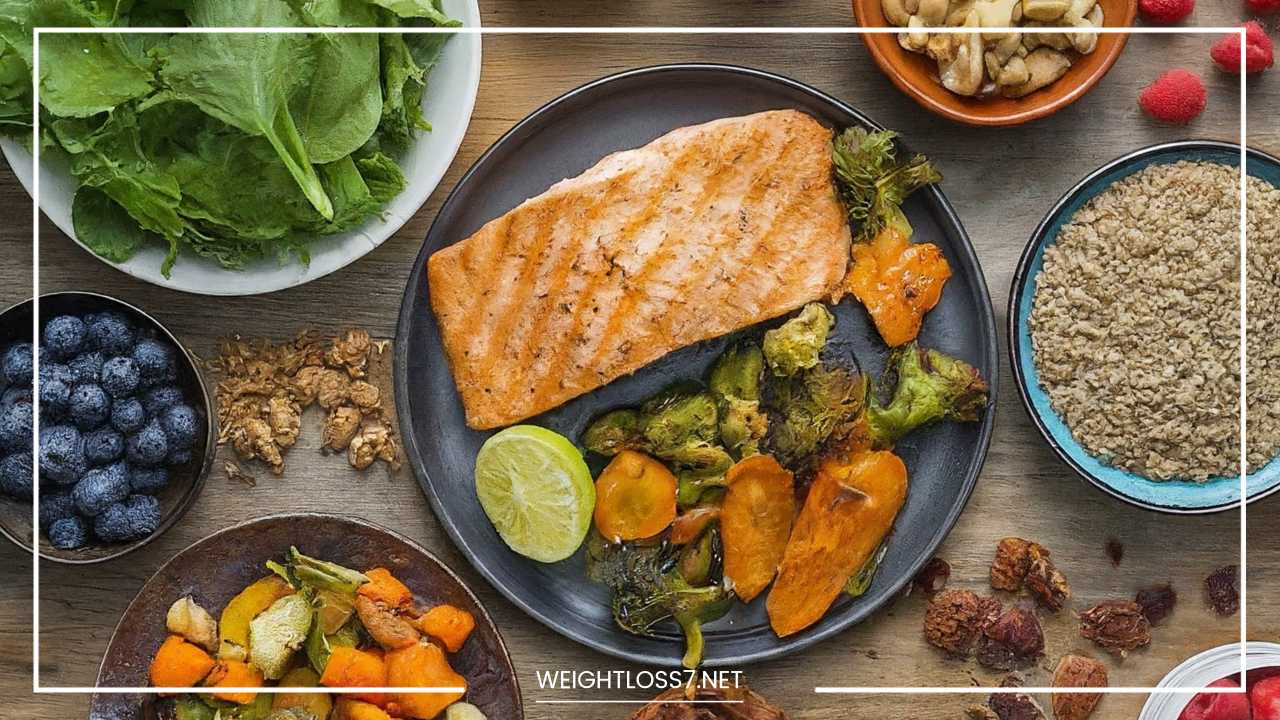Paleo Diet: Pros, Cons, and Everything You Need to Know

Paleo Diet
Unleash Your Inner Caveman: A Comprehensive Guide to the Paleo Diet
A Primal Call: The Allure of the Paleo Diet
In a world overflowing with processed snacks and sugary temptations, it’s no wonder many people feel disconnected from their bodies.
The Paleo diet, inspired by the presumed eating habits of our Paleolithic ancestors, offers a compelling alternative.
It’s more than just a diet; it’s a philosophy that encourages a return to a more natural way of fueling our bodies and living in harmony with our evolutionary heritage.
This comprehensive guide delves into the world of Paleo, exploring its core principles, potential benefits, and practical tips to get you started.
We’ll unpack the science behind the movement, address common concerns, and equip you with the knowledge to make informed decisions about whether Paleo is right for you.
Beyond the Hype: The Science Behind Paleo
The core belief of the Paleo diet is that our bodies are genetically adapted to the foods our hunter-gatherer ancestors consumed roughly 2.5 million to 10,000 years ago.
This period, known as the Paleolithic era, is characterized by a nomadic lifestyle centered around hunting, gathering, and fishing.
Proponents argue that the agricultural revolution, which introduced grains, legumes, and dairy around 12,000 years ago, marked a significant shift in our diet and may be a contributing factor to the rise of chronic diseases like obesity, diabetes, and heart disease in modern times.
While there’s no time machine to confirm our ancestors’ exact dietary patterns, research suggests they consumed a diet rich in:
- Lean meats: Grass-fed animals provided essential protein and healthy fats.
- Fish: Fatty fish offered a source of omega-3 fatty acids, crucial for brain and heart health.
- Fruits and vegetables: A diverse range of plants provided vitamins, minerals, and fiber.
- Nuts and seeds: These offered concentrated sources of healthy fats, protein, and micronutrients.
The Paleo diet argues that these whole, unprocessed foods are what our bodies are best equipped to handle. Modern processed foods, on the other hand, are often high in refined carbohydrates, added sugars, and unhealthy fats, which may disrupt our metabolism and contribute to various health issues.
The Paleo Promise: Potential Benefits of the Primal Lifestyle
The Paleo diet has gained popularity due to the wide range of potential benefits it offers. Here’s a closer look at some of the key reasons people choose to go Paleo:
- Weight Management: Paleo often leads to weight loss due to its emphasis on whole, unprocessed foods that are naturally lower in calories and more filling than processed options. Reduced calorie intake and increased satiety from protein and fiber can lead to a healthy calorie deficit promoting weight loss.
- Improved Blood Sugar Control: Refined carbohydrates found in grains and sugary drinks can cause blood sugar spikes and crashes. By eliminating these foods and focusing on low-glycemic options like vegetables and some fruits, Paleo can help regulate blood sugar levels, potentially benefiting those with type 2 diabetes or prediabetes.
- Reduced Inflammation: Chronic inflammation is linked to various health problems, including heart disease, arthritis, and autoimmune disorders. Paleo eliminates foods like grains and legumes, often implicated in triggering inflammatory responses. This dietary shift may lead to a reduction in overall inflammation.
- Increased Energy Levels: Stable blood sugar from nutrient-dense meals is key to sustained energy throughout the day. By eliminating sugary snacks and refined carbohydrates that cause energy crashes, Paleo can help you feel energized and focused.
- Gut Health Boost: The gut microbiome plays a vital role in digestion, immune function, and overall health. Paleo’s emphasis on whole foods rich in prebiotics (fiber that feeds gut bacteria) can promote a healthy gut environment, potentially leading to improved digestion and overall well-being.
Beyond the Plate: The Paleo Lifestyle Encompasses More Than Diet
The Paleo philosophy extends beyond just food choices. It encourages a holistic approach to health that reflects the lifestyle of our hunter-gatherer ancestors. Here are some key aspects of the Paleo lifestyle:
- Regular Exercise: Activities like running, jumping, climbing, and lifting weights mimic the physical demands of our ancestors and promote overall fitness and strength.
- Prioritizing Sleep: Adequate sleep allows the body to repair and recharge, vital for optimal health and hormonal balance.
- Stress Management: Techniques like meditation, yoga, and spending time in nature can help combat the negative effects of chronic stress, which can disrupt sleep, metabolism, and overall health.
- Connection with Nature: Spending time outdoors has been shown to improve mood, reduce stress, and boost immunity. This aligns with the hunter-gatherer lifestyle and can be a valuable addition to the Paleo approach.
A Caveat: Exploring the Potential Drawbacks of Paleo
While the Paleo diet offers a compelling approach to health, it’s important to consider its potential drawbacks before diving in. Here are some key areas to be aware of:
- Limited Food Choices: Restricting entire food groups like grains, legumes, and dairy can make it challenging to create a balanced and varied diet. This can be especially difficult for vegetarians, vegans, or those with social lives that revolve around shared meals.
- Potentially Expensive: Grass-fed meats, wild-caught seafood, and organic produce are often more expensive than conventionally raised options. Sticking to Paleo on a budget can require careful planning and meal prepping.
- Lack of Long-Term Research: While some studies show benefits, more long-term research is needed to confirm Paleo’s long-term health effects. The long-term impact of eliminating entire food groups, particularly for specific demographics or health conditions, requires further investigation.
- Difficult to Maintain: The restrictive nature of Paleo can be challenging to adhere to long-term, especially in social settings. Traveling, attending events, or eating out can become a logistical hurdle.
- Nutrient Deficiencies: Eliminating dairy can lead to calcium and vitamin D deficiencies if not replaced with suitable alternatives. Additionally, limited whole grains may decrease fiber intake, potentially impacting gut health.
Making Paleo Work for You: Practical Tips and Considerations
If the potential benefits of Paleo resonate with you, here are some practical tips to get started and navigate the potential challenges:
- Start Gradually: Don’t overwhelm yourself by drastically changing everything overnight. Introduce Paleo principles one step at a time. Begin by focusing on eliminating processed foods and sugary drinks, then gradually incorporate more lean protein, fruits, vegetables, nuts, and seeds.
- Stock Your Kitchen with Paleo Staples: Having healthy options readily available is key to success. Fill your pantry with nuts, seeds, dried fruits, healthy fats like olive oil and avocado oil, and canned fish like tuna or salmon. Stock your fridge with fresh vegetables, fruits, and lean meats.
- Embrace Meal Planning: Planning your meals and snacks in advance can help you stay on track and avoid unhealthy choices when hunger strikes. Utilize cookbooks and online resources for Paleo-friendly recipe inspiration.
- Find Substitutes for Cravings: Craving a pizza? Experiment with a cauliflower crust pizza topped with Paleo-approved ingredients. Missing pasta? Explore veggie noodles made from zucchini or sweet potato.
- Listen to Your Body: Paleo is not a one-size-fits-all approach. Pay attention to how your body reacts to certain foods. If you experience digestive issues or feel sluggish after a meal, adjust your approach.
- Seek Guidance from a Registered Dietitian: A registered dietitian can help you create a personalized Paleo plan that addresses your individual needs and health goals. They can also guide you on ensuring you meet your nutrient requirements with this dietary approach.
Paleo: A Stepping Stone or a Lifestyle?
Ultimately, the decision of whether to adopt Paleo is a personal one. It may be a great starting point for those seeking to improve their overall health and well-being by focusing on whole, unprocessed foods. However, it’s important to be realistic about the challenges and potential drawbacks.
Paleo can be a valuable tool for resetting your relationship with food and learning healthy eating habits. However, strict adherence to the Paleo diet for the long term might not be necessary or sustainable for everyone.
Consider Paleo as a stepping stone on your personal health journey, allowing you to learn valuable lessons about nutrition and incorporate them into a more flexible, long-term approach.
The Final Bite: Embracing a Balanced and Sustainable Approach to Food
Whether you choose to fully embrace Paleo, adopt some of its principles, or explore a different dietary approach, the key is to find a way of eating that promotes overall health, well-being, and a sustainable lifestyle.
Focus on incorporating a variety of nutrient-dense whole foods, prioritize sleep and stress management, and move your body regularly. With a mindful approach, you can create a personalized recipe for optimal health and vitality.
Beyond the Plate: Exploring Alternative Approaches Inspired by Paleo
The Paleo diet has sparked a broader conversation about the importance of whole, unprocessed foods and a return to a more natural way of eating.
This has led to the emergence of several alternative dietary approaches that borrow elements from Paleo but offer a bit more flexibility. Here’s a look at some of these options:
- The Pegan Diet: This approach combines the best aspects of the Paleo and Mediterranean diets. It emphasizes fruits, vegetables, whole grains, legumes, and healthy fats like olive oil, while limiting red meat and processed foods. This can be a good option for those who find Paleo too restrictive but still want to prioritize whole foods and reduce inflammation.
- The Primal Blueprint: This philosophy focuses on eating like our ancestors but acknowledges the adaptations humans have made throughout history. It allows for the inclusion of some dairy products like yogurt and cheese, and emphasizes the importance of fermented foods for gut health.
- The Autoimmune Protocol (AIP): This elimination diet is designed to identify and eliminate food triggers that may be contributing to autoimmune conditions. While more restrictive than Paleo in the initial stages, it reintroduces food groups gradually to pinpoint sensitivities. This approach should be undertaken under the guidance of a healthcare professional.
Paleo and You: Considerations for Specific Needs
While Paleo offers potential benefits, it’s crucial to consider your individual needs and health conditions before making any significant dietary changes. Here are some specific considerations:
- Athletes: Paleo’s focus on protein can be beneficial, but the limited carbohydrate intake may not provide enough energy for high-intensity training. Athletes may need to adjust their Paleo approach to include complex carbohydrates like sweet potatoes or plantains to fuel their workouts.
- Vegetarians and Vegans: Strict Paleo excludes animal products, making it incompatible with a vegetarian or vegan diet. However, there are plant-based Paleo variations that emphasize legumes, nuts, seeds, vegetables, and fruits to meet protein and nutrient needs. Consulting a registered dietitian is crucial to ensure proper nutrient intake on a plant-based Paleo approach.
- Pregnant and Lactating Women: Pregnant and lactating women have increased nutritional needs. Paleo’s limitations on dairy and certain whole grains may require careful planning and supplementation to ensure adequate calcium, vitamin D, and other essential nutrients. Consulting a healthcare professional or registered dietitian is crucial for creating a safe and balanced Paleo approach during pregnancy and lactation.
Paleo: A Call to a Healthier You
The Paleo diet offers a compelling approach to health and wellness, encouraging a return to whole, unprocessed foods and a more natural way of living.
While there are potential drawbacks and considerations, it can be a valuable tool for those seeking to improve their overall health and relationship with food.
Remember, there’s no single “perfect” diet. The key is to find a sustainable and balanced approach that works for your unique needs and preferences.
Whether you choose to fully embrace Paleo, incorporate some of its principles, or explore a different path, use the knowledge gained to embark on a lifelong journey towards optimal health and well-being.

















